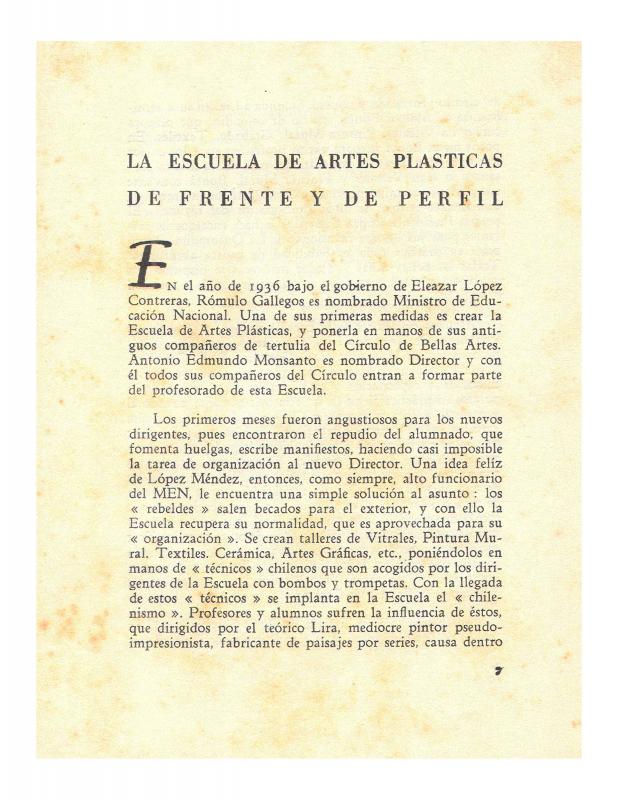In 1976, when Venezuelan painter Mateo Manaure (b. 1926) turned fifty, he was preparing the exhibition Columnas policromadas to be held at the Museo de Arte Contemporáneo de Caracas the following year. In the abstract work shown in that exhibition, the interaction of lines and colors seemed to create a volumetric effect. Manaure denies any connection between these works and the Venezuelan Kinetic art movement, which was beginning to be seen as repetitive and commercial. It was in the framework of his final abstract works—Manaure would resume figurative compositions in 1981—that the artist granted this interview to Teresa Alvarenga. In it, he mentions important developments in the different phases of his career.
The most important contribution of this text is the reconstruction of Manaure’s career in his own words. Also important is the minor information it compiles: names of players, locations of gathering points and of galleries, the nature of the instruction at the Escuela de Artes Plásticas, some student initiatives there, etc. In this interview, the artist speaks of the creation of exhibition venues and galleries at the initiative of artists, as well as the set of circumstances that prevented such initiatives from enduring over time. Manaure has a distinct vision of the dynamics of groups such as the Taller Libre de Arte and Los Disidentes, which are generally seen as “rivals” where one supports figuration and the other abstraction. But Manaure himself overcame such pat oppositions, moving back and forth between the two.
On Manaure’s work, see Víctor Guédez, “La creación estético-visual en Mateo Manaure” (ICAA digital archive doc. no. 1155531); Roberto Guevara’s texts, “Manaure y la inmensa noche” (doc. no. 1156411), “Manaure: Columnas en tierras movedizas” (doc. no. 1155301), and “Manaure y las Cuvisiones” (doc. no. 1156459); Perán Erminy’s essay, “Las imágenes poéticas de Manaure” (doc. no. 1156523); Alfredo Boulton, “Mateo Manaure en el Museo de Bellas Artes” (doc. no. 1157497); Gastón Diehl, “Mateo Manaure” (doc. no. 1156491); Pedro Lhaya’s article, “Mateo Manaure o la autenticidad pictórica americana” (doc. no. 1156443); and “La Escuela de artes plásticas de frente y de perfil” (doc. no. 813569), a text by Manaure himself that provides a critical overview of the Escuela de Artes Plásticas de Caracas.









